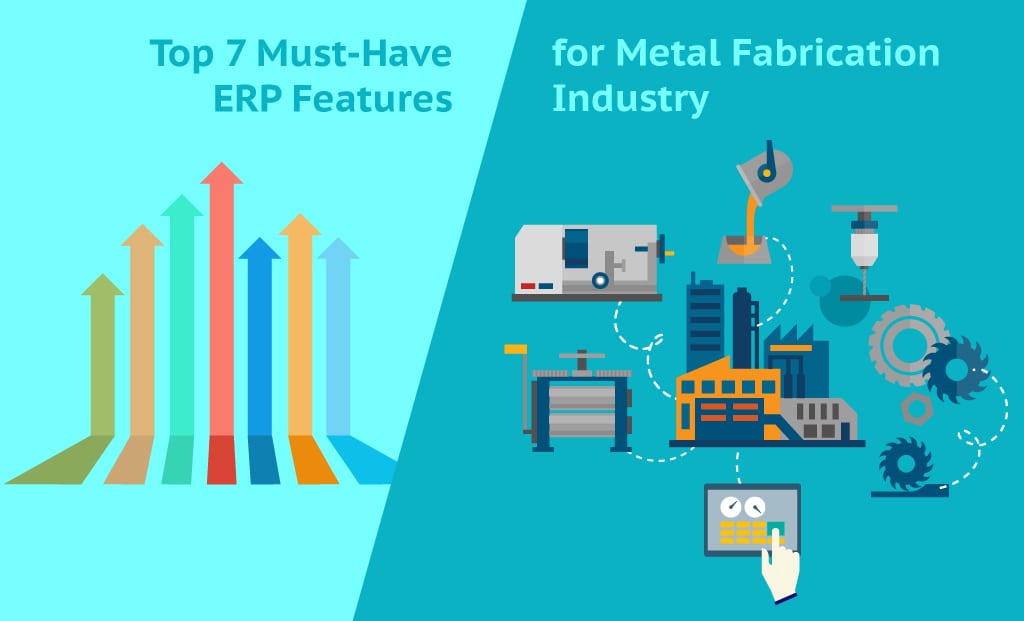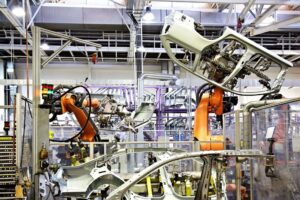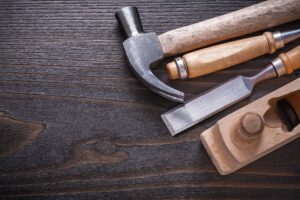Metal fabrication industry plays a pivotal sub-set to other industries such as automobile, aerospace, construction, industrial machinery etc. From small fabricator shops catering to local contractors to big fabrication units supplying to OEMs and VARs in large quantities, each industry player faces stiff competition and every order counts.
To keep up with the pace and beat competition, metal fabricators need to bring agility and swiftness in their manufacturing operations. This can only be achieved by transitioning from conventional business processes and methods to an automated Enterprise Resource Planning (ERP) system.
An ERP streamlines critical manufacturing operations and gives you real-time information at every production phase. It enables you to keep an eye on critical parameters such as inventory, quality management, material utilization, sales management etc. So that you can take informed or corrective decisions without impacting delivery timelines.
Let us look at top 7 ERP features for Metal Fabricators.
- Estimating & Quoting
- Inventory Control
- Nesting Integration
- Integration with CAD
- MRP & Scheduling
- Quality Control
- External Interfacing Capability
Estimation & Quoting
Estimation & Quoting is one of the most critical business process for metal fabricators. The time-to-quote makes or breaks the deal with your prospect customer and decides your reputation in the market driven by stiff competition. In order to decrease time-to-quote, it’s important to arrive at your cost estimates in the least time possible.
An ERP eliminates pencil & paper/spreadsheets approach, over-dependency on personnel skilled in estimation & quoting etc. It gives you real-time visibility to Bill of Materials (BOM) at multiple levels, prices of different vendors and cost of materials, current inventory levels etc. enabling you to arrive at the cost you would incur for each order and associated profit margins. Also, flexibility in the system means constant change in customer preferences/requirements (even in design stage) can be incorporated and desired results can be obtained swiftly.
Inventory Management & Control
Metal fabrication operations are highly dynamic and unpredictable considering the fact that it caters to varied types of product orders and customers at the same time.
An ERP keeps a real-time track of your inventory right from its procurement till consumption. You can trace its whereabouts within your facility and also between warehouses. With Bar Code integration, you can generate bar-code labels for each item and track them throughout the process. You can pinpoint the exact job where a particular inventory has gone into for production. You get automated alerts when stock levels deplete below a certain threshold enabling you to place re-orders. This way, you maintain optimum inventory levels thereby reducing storage costs and at the same time managing purchase orders efficiently.
Nesting Integration
Metal Fabricators have to often deal with simultaneous orders that differ in design, specifications, dimensions, and quantity. While they manage to execute these orders effectively, they have to ensure absolute control over their inventory and ensure minimal wastage of materials.
An ERP has the capability of integrating with various nesting applications to control material utilization and reduce inventory costs. It is a complementary process where the nesting module tracks remnants of inventory post-production and the ERP tracks inventory and triggers re-ordering if necessary. An ERP is capable of capturing completions, part weight, labor and drop information from machine controller. It tracks material usage and quantity of material being used at each step of every operation.
Integration with CAD
Metal fabricators work intensively with a CAD software for their designs and translate them into production. Considering that they have to work with different customer types and designs, an ERP should have the capability to integrate with CAD software for efficient operations.
An ERP integrates production, inventory, BOM, scheduling etc. directly with CAD, thereby enabling design changes/updates to be quickly reflected across the system in real-time. This ensures accurate cost-estimates for quotes, timely procurement of raw materials required and correct scheduling of jobs for production.
MRP & Scheduling
Material management and scheduling are the most challenging areas for a fabricator. Getting the right material to the right place at the right time has a huge impact on customer delivery and in turn on your market reputation and future orders.
An effective Material Requirement Planning (MRP) within an ERP helps identify sources of material demand and instantly triggers purchase order(s). Based on demand & purchase trends, you can anticipate your requirements and minimize over-stock of inventory levels, thereby reducing storage costs and maintenance. You also can schedule your purchases so that the material stock is maintained without your intervention.
Quality Management & Control
Quality Control & Management is a critical parameter for fabricators considering their end-products will be used by automobile, aerospace and machinery manufacturers who are regulated by stringent quality standards. Therefore, every fabrication setup needs to have mechanisms that ensure right quality standards are maintained at every step of manufacturing.
An ERP takes these quality standards into account and offers comprehensive compliance system that is integrated with core Manufacturing Execution System (MES). It continuously measures quality parameters at every step to ensure immediate corrective measures in case of defects. Product traceability with the help of bar-coding/labeling technology ensures quick-recall and defect-resolution thereby enhancing customer-relationships & market-reputation. From attaching inbound material certifications to first piece inspections to SCARs to final deliverable quality checks, ERP manages everything flawlessly.
External interfacing capability
For an ERP to fulfill end-to-end manufacturing requirements, it has to complete itself by interfacing with other applications. The integrability factor of an ERP allows best of breed applications to complement its functionality and benefit users tremendously. The applications include EDI, e-commerce, machine controllers, test equipment, etc. An ERP can be integrated with CAD systems so that any design changes are routed to nesting softwares such as ProNest, SigmaNest for immediate production. Product traceability becomes easy with integration with bar-coding and labeling applications reducing manual work.
With these 7 core features in ERP, a metal fabricator instantly witnesses significant cost-reduction and increase in production. High quality products lead to immense customer satisfaction and increased market reputation. All this, eventually helping the fabricator to beat stiff market competition.






One Response
Just exploring your services